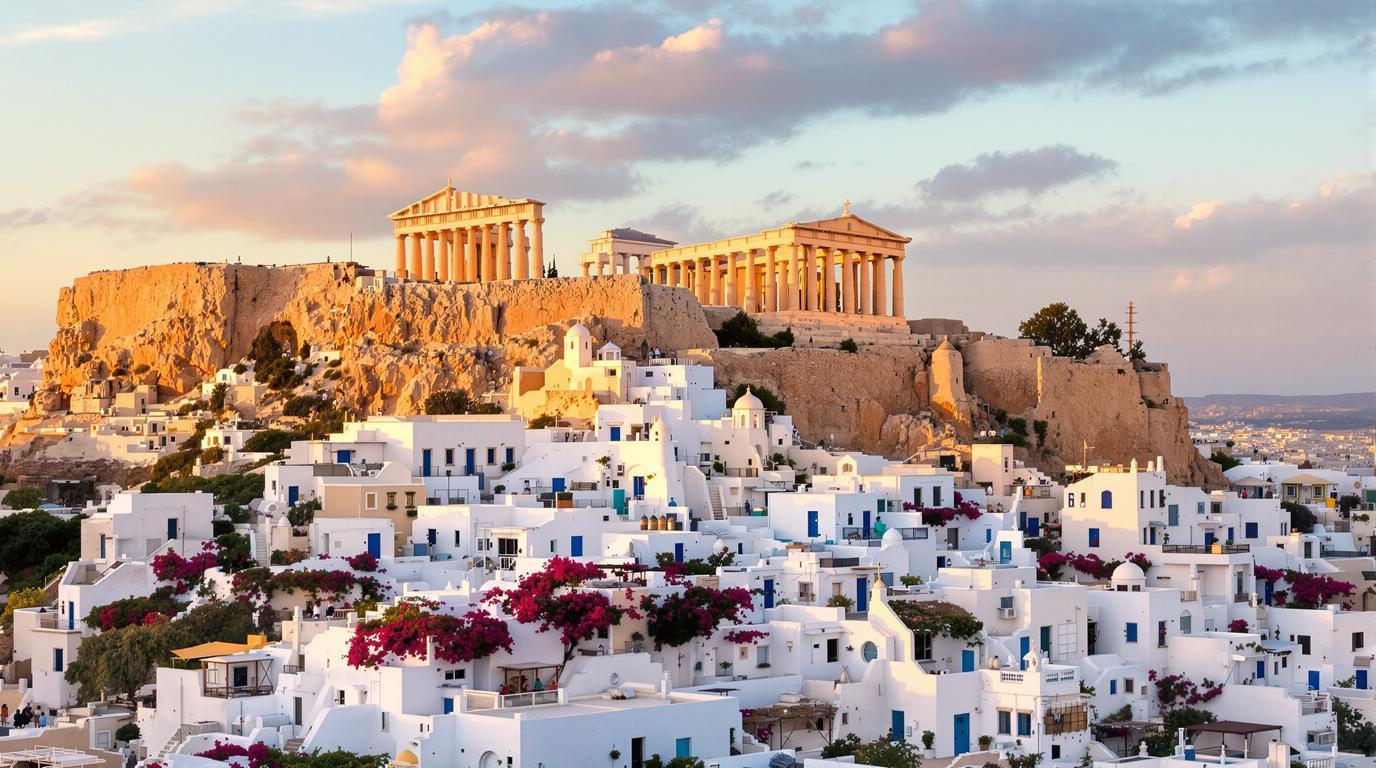Athens, the ancient capital perched on rocky hills in Greece’s Attica region, has witnessed 3,400 years of continuous civilization. This remarkable city – where democracy, philosophy, and Western theater were born – continues to mesmerize visitors with its extraordinary blend of ancient wonders and vibrant modern life.
The Acropolis: A 2,500-year-old engineering marvel with secret chambers
Standing atop its limestone plateau, the Parthenon dominates Athens’ skyline with the same commanding presence it’s held since 438 BCE. What most visitors don’t realize is that this architectural masterpiece contains subtle optical illusions – its columns subtly curve outward to appear perfectly straight from a distance, a technique called entasis.
The Parthenon shares the Acropolis with other remarkable structures like the Erechtheion, with its iconic Caryatid columns – sculptures of women serving as pillars. One ancient Athenian guide once noted,
“Our monuments aren’t merely stone, but the physical embodiment of our ideals.”
Similar ancient engineering marvels can be found at other temples that incorporate clever optical illusions that have deceived visitors for millennia.
Anafiotika: The hidden island village floating above Athens
Nestled just beneath the northern slope of the Acropolis lies Athens’ best-kept secret – a tiny neighborhood that feels transplanted directly from a Greek island. Whitewashed houses with blue doors and cascading bougainvillea create a labyrinth of narrow paths where cats sunbathe on worn marble steps.
Anafiotika was built in the 1840s by craftsmen from the island of Anafi who came to work on King Otto’s palace. They constructed their homes in the Cycladic style, creating a slice of island life in the heart of Athens.
Ancient Agora: Where Socrates and Plato once walked
While everyone rushes to the Acropolis, the nearby Ancient Agora offers a more intimate connection with history. This was Athens’ beating heart – its marketplace, political center, and social hub where philosophy was born.
The remarkably preserved Temple of Hephaestus stands as the Agora’s crown jewel. Dr. Elena Papadimitriou, archaeologist at the University of Athens, explains,
“Walking through the Agora is walking in the footsteps of Socrates. This wasn’t just where goods were traded, but where ideas that shaped Western civilization were exchanged.”
This remarkable preservation of ancient urban life resembles France’s largest archaeological site, another ancient Roman wonder often overlooked by travelers.
The neighborhood where gods and wild deer coexist
Modern Athens reveals its charms in neighborhoods like Plaka and Monastiraki, where Byzantine churches share narrow streets with neoclassical mansions. The scent of souvlaki fills the air as locals debate politics over strong Greek coffee, continuing traditions from ancient times.
Athens’ fascinating relationship between humans and nature recalls Japan’s ancient city where deer bow for treats, demonstrating how historical urban centers can maintain harmonious connections with wildlife across millennia.
The underground metro museum few tourists discover
When Athens built its modern metro system, workers unearthed over 50,000 artifacts. Rather than halt progress, engineers incorporated these treasures into the stations themselves. Syntagma Station now displays ancient water pipes, burial chambers, and everyday items behind glass walls.
Local guide Dimitris Kostaras shares,
“Our metro is both a transportation system and a time machine. Where else can you descend an escalator and see an ancient road exactly as it appeared 2,000 years ago?”
Beyond the ruins: Athens’ literary enchantment
Athens’ cultural significance extends beyond its ruins to a rich literary tradition that continues today. The city has inspired countless writers, much like Edinburgh’s enchanted streets that birthed literary wizards and magical tales.
Escape to Athens’ secret turquoise coves
Just 30 minutes from downtown Athens, the Apollo Coast offers crystalline waters and hidden beaches. While not as famous as Bora Bora’s untouched twin with its glowing lagoon, these accessible shores provide a perfect counterpoint to urban exploration.
Standing at the Temple of Poseidon at Cape Sounion as the sun sets into the Aegean, it becomes clear why Athens endures as one of humanity’s most profound achievements. This is more than an open-air museum – it’s a living testament to human potential, where ancient wisdom continues to illuminate our modern world.
